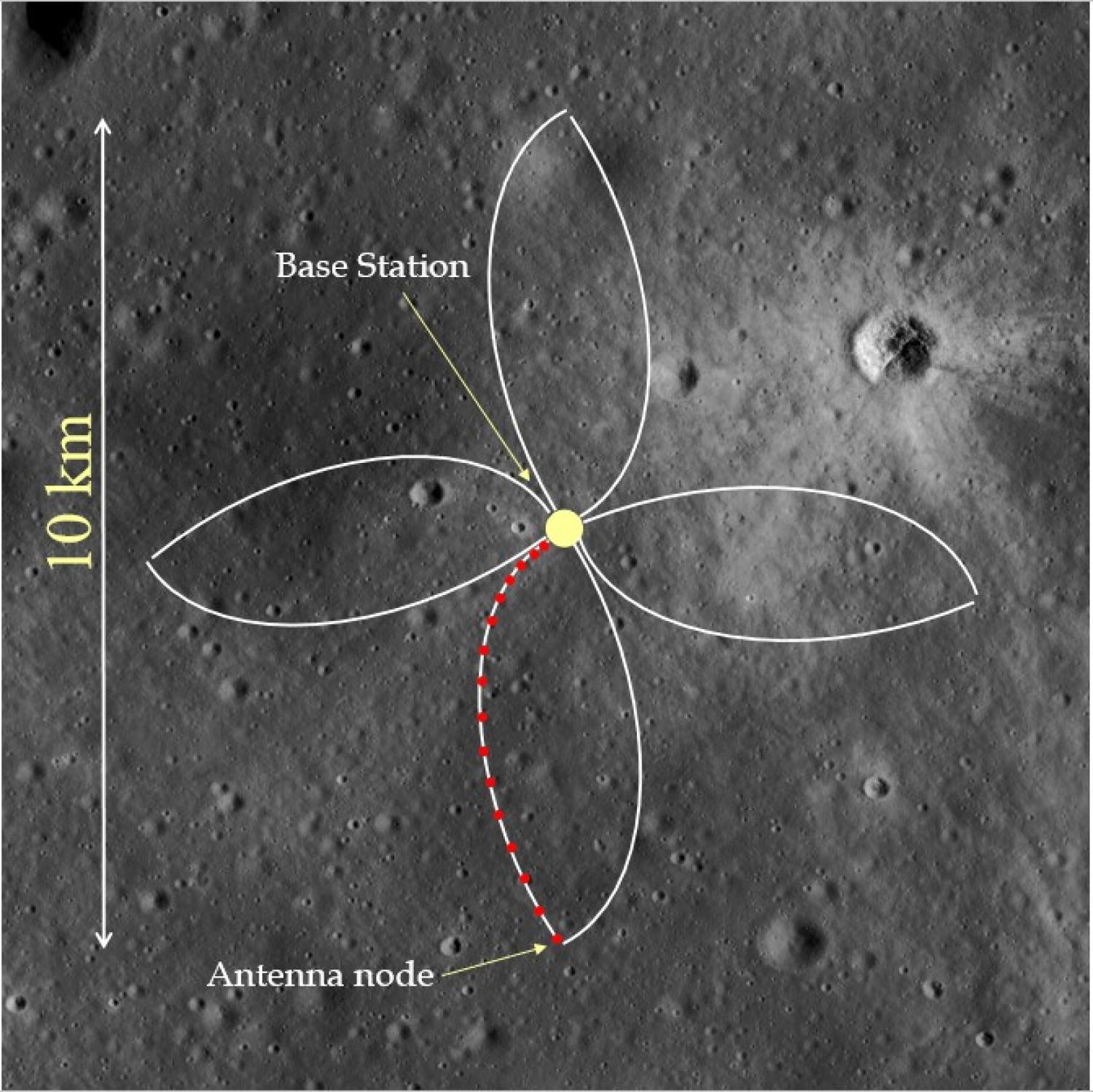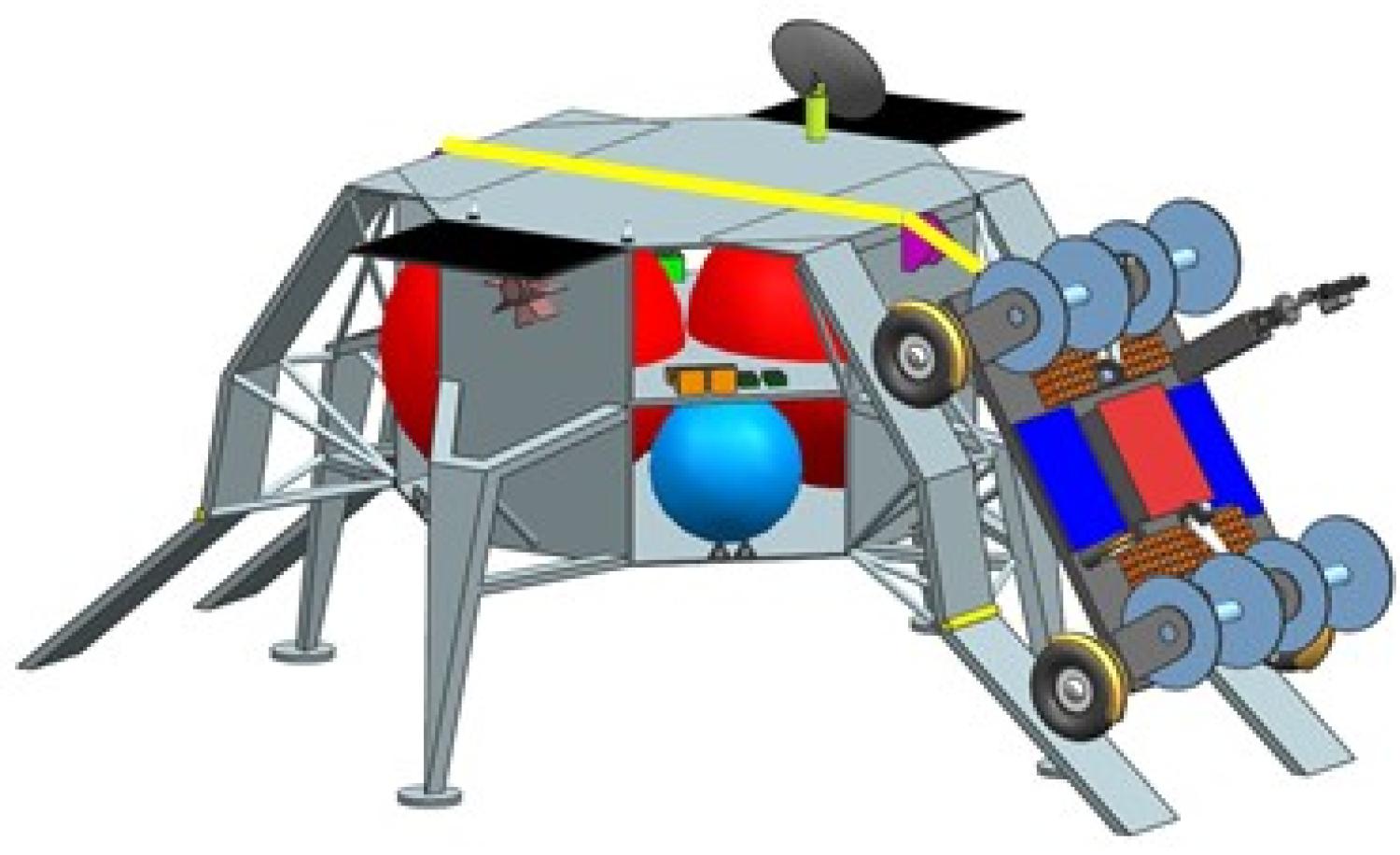Array/Rover
Proposed Architecture and Array Configuration
FARSIDE consists of a central Base Station and 128 antenna nodes distributed across a 10 km diameter area. The nodes are distributed along 8 independent tethers, which are deployed to form 4 petals with a deliberate asymmetry to improve imaging performance. A deployment rover carries a set of antenna nodes out from the base station, unreeling the tether. Then the rover comes back to the base, along a different path, continuing to unreel the tether and attached nodes. This process repeats another 3 times until the array is fully deployed. The Base Station has a pair of Radioisotope Thermal Generators (RTG), providing power, signal processing, and telecommunications link back to Earth (via a relay). The individual antenna nodes are a crossed dipole with preamplifier, sending the two signals back to the Base Station via optical fibers as an analog signal. The antenna nodes are powered in series similar to the scheme used for transoceanic cables, so only two power conductors are needed (although 6 conductors are used for redundancy).
Deployment Rover
The 420 kg rover is based on the Apollo Lunar Roving Vehicle and includes 1.6 m2 of solar array and a 30 Ah battery to stay alive during the Lunar night. 4 RHUs keep the avionics warm at night, and during the day, a 1.3 m2 radiator is used to reject the heat during operations. The rover carries the same flight computer as the base station. The telecom capability of the rover is essentially identical to the base station with a gimbaled High Gain Antenna (HGA) to communicate with the Deep Space Gateway. After landing, the rover is deployed down a ramp to the Lunar surface. A winch provides support during the initial steep descent. Ramps are provided on both sides for redundancy, in the event that the landing side makes it difficult to descend on one side or the other.
The rover includes 4 hazard avoidance cameras and 2 navigation cameras on a mast which are used by human operators on Earth. Every 5 meters (about 3-4 minutes at the expected driving speed) a set of images is collected and sent back to Earth, the teleoperators confirm the next 5 meter driving increment, and the process repeats, roughly every 7 minutes. An antenna node is deployed after every 3-4 hours of driving. Allowing 1 hour to deploy each antenna node, the trip out from the base to deploy 16 nodes will take 80 hours, and another 80 hours to return to base, deploying the second spoke. We have allowed one Lunar day (14 Earth days) to completely deploy one petal (two spokes) to allow for intervals when the Lunar Gateway is not in view, and for contingencies to route around obstacles. During the Lunar night, the rover goes into deep sleep mode. After 4 months, all the petals will have been deployed.

FARSIDE will consist of 128 antenna nodes deployed by a rover from a central base station, with the antennas arranged in a petal configuration.

Conceptual design for the FARSIDE rover.

